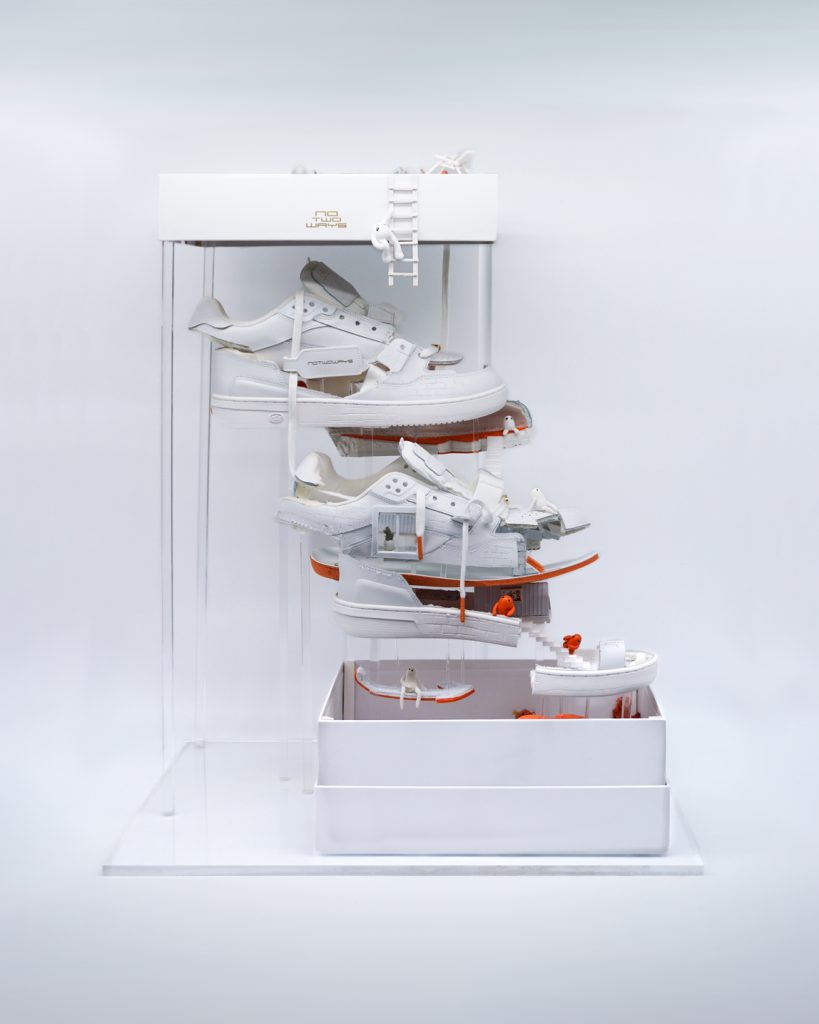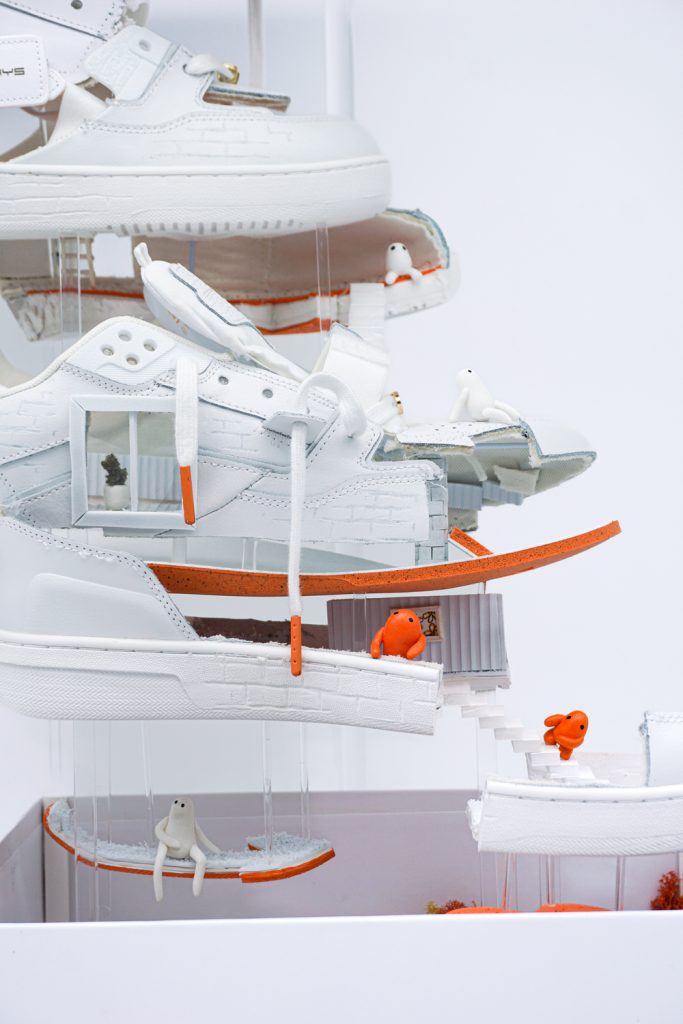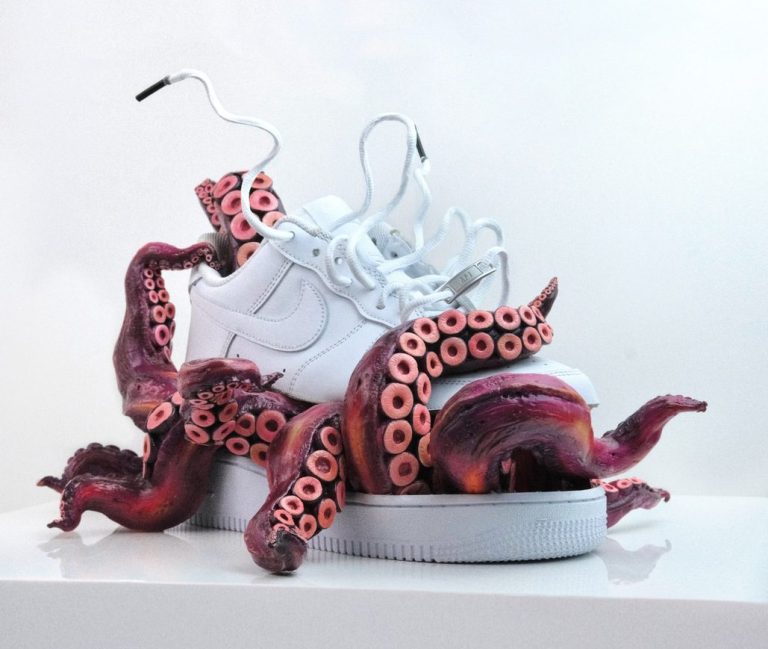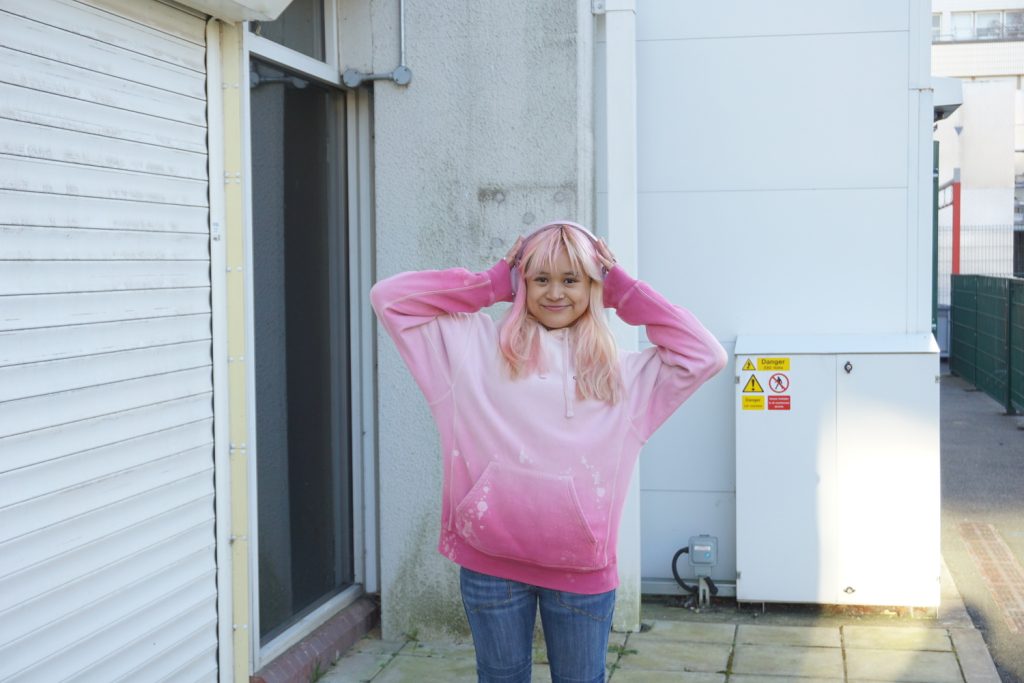
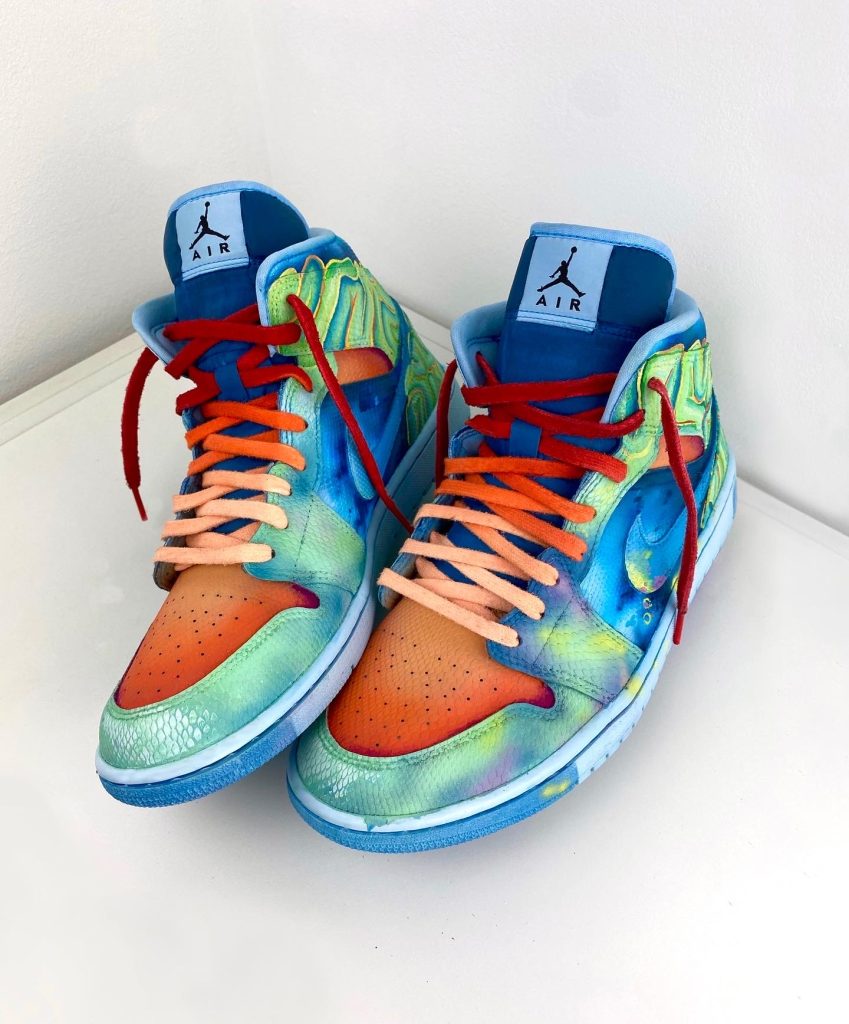
Meet Melicka Fouri, an artist hailing from Coventry, UK, who has revolutionised the custom sneaker scene by transforming sneakers into display art pieces. Melicka’s fusion of art, okki’s planet and footwear has not only graced galleries in Paris but has also found a home in streetwear stores, embodying a philosophy about brand storytelling, community, and creative expression.
hube: What initially drew you to the world of art, and how has your artistic journey evolved?
Melicka Fouri: I’ve always been drawing ever since I was young, especially with coloured pencils. I remember always asking my parents for new coloured pencils and markers. As I grew up, I started doing portraits, usually of people and cartoons I liked. When I was 15, I did an art course in my school. We had to explore different mediums, like paint and oil pastels, and research different artists. It was the first time my teacher asked for the meaning behind the art to improve my grade.
I stopped doing art for a few years, focusing on my studies. During COVID, I started painting sneakers, inspired by what I’d seen before. I made some for myself, and it evolved. I wanted to raise money for a charity by making custom sneakers. But it felt off. If I wanted to do it full-time, it didn’t make sense to just do what people told me to. So, I explored different types of art in sneakers. It became a way for me to explore the sneaker silhouette and express myself when I felt like it.
h: Could you share how you first got started in the custom sneaker space, and what inspired you to combine art with sneakers? Could you elaborate on how this philosophy influences your work?
MF: The catalyst to actually start customising sneakers was after George Floyd’s death when the Black Lives Matter movement was at its peak. I was young and didn’t have money, but wanted to make a difference. So, I thought, ‘Let me invest in some paints and just paint sneakers for my friends and family’. I did a raffle where they’d get a free pair of custom sneakers. They could ask for whatever they wanted, but it was like a £5 ticket or something. From there, I raised money for the Saint Laurent Christ charity. Then, my friends, some of them who didn’t win the raffle, messaged me, saying they still really wanted a custom pair. So, I started making more for people, and that’s when I thought, ‘Okay, people are seeing my work’.
I dropped out of university to do art full-time. I was taking a risk by leaving my education, so I needed to make it valuable. I couldn’t just do cartoons and anime customs for the next 20 years. It felt short-term. I started exploring other ideas I enjoyed. Some people who ordered customs from me wouldn’t wear them; they’d keep them on display to avoid ruining the shoes. That got me thinking, ‘Why not explore it to another level? They’re not wearing it anyway, so it doesn’t have to be functional necessarily’. The first one I worked on was my brain for a gallery in Paris, Gallery Sakura. They asked customisers to create shoes and display them in their gallery. They gave me only one shoe to work on, so I used the opportunity.
My philosophy is that many people are collectors who won’t wear their sneakers, and some who buy my custom work won’t wear it either. It’s made for those who appreciate art and sneakers, a blend for people who love both. But I still love customs that you can wear because I like wearing them. I only wear custom sneakers, to be honest, because I think they look cool and help to express yourself. So, depending on my mood, I still do big custom sneakers.
h: The diverse range of your sculptural works, from pieces representing the first blush of excitement in a new friendship to those capturing the experience of depression, suggests a deep emotional connection to your art. How do you choose the themes or emotions you want to express in each piece?
MF: Usually, it’s when emotions have built up to a point where I really understand them, and it’s easy for me to express them in a physical piece. Recently, I’ve been feeling a certain way, and I keep telling myself I need to make art about it, but I can’t. I don’t understand the feeling yet, so it’s hard to express when I can’t quite imagine it in real life. Those pieces come when I’ve lived through my emotions long enough and figured out myself and what I’m feeling. The piece about happiness was the first time I made art about positive emotions, and it felt really nice.
h: In terms of your vision, how do you see your art fitting into retail spaces and helping brands tell their stories through artwork without taking away from the base products?
MF: That’s a really good question. I feel like there are two modes of interest. For example, I hate shopping; it feels annoying and stressful. I either end up being an impulse buyer, grabbing something I like, or I dive deep into unnecessary research to get the best thing.
Because of this, I want to make the retail experience more enjoyable. We all have to go shopping sometimes. Sneaker stores appeal to me because creative people often frequent them, like those into music or skating – interesting people. However, space doesn’t always reflect that creativity. I imagine highlighting new releases by turning them into art pieces. Displaying a sneaker as an art piece can make people curious, and then they find out it’s available for sale.
I had my sneakers in a store once, and the feedback was positive. People were curious and wanted to know more, a sign that they cared. When designing with the retail space in mind, I avoid overly painting the shoe so as not to take away from the original too much. For example, the ambulance shoe was just an interesting idea, whereas the tentacle one added interest without taking away from the shoe. I didn’t paint on the shoe; I turned it to become interesting, maintaining the essence of the original design. Now most interest comes from social media. Brands often ask me to create for them on social media, and they usually provide specific requests.
h: Looking at the broader art scene, what trends or movements do you find most intriguing or inspiring, and how, if at all, do they influence your work?
MF: What inspires me is when I see people doing things that make me think, ‘I wish I thought of that first’. It pushes me to prioritise my ideas even with a busy schedule. I’ve got numerous ideas written out, but I need to make time for them. I’ve realised you can’t guarantee your idea will stay hidden forever.
In terms of trends, I try not to follow them. Being yourself is the most progressive thing. I find inspiration in random things. Weirdly, sitting and thinking about new ideas inspires me. There’s something to work off of; I think about how I can boost it in a way people haven’t thought of before. Recently, I’ve noticed a movement of people in my space doing galleries, and it’s inspiring. TT Finley, a sneaker artist, had a pop-up space, and seeing someone in my field doing it motivates me. I’ve been thinking about it, and I’m considering pushing myself to do it this year.
Certainly, I find inspiration from artists like Eric Joyner. His whimsical art with old-school robots in real-life situations makes me happy. It’s about using imagination to create something fun and adding a touch of weirdness and nature to it, like incorporating aliens into my sculptures.
